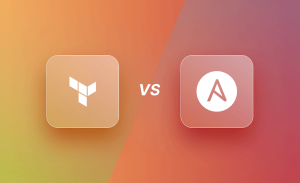
1. Definition
Monolithic Architecture:
A monolithic architecture is a traditional unified model for designing software applications. All the functionalities and components of the application are tightly coupled and reside within a single codebase or application. The monolithic application is deployed as a single unit.
Microservices Architecture:
A microservices architecture is an approach where an application is composed of smaller, independent services, each of which represents a specific business functionality. Each microservice runs its own process and communicates with other services over a network, typically using lightweight protocols such as HTTP/REST or messaging queues.
2. Structure and Organization
• Monolithic Architecture:
• Single Codebase: The entire application resides within a single codebase.
• Single Deployment: The application is deployed as a single unit. Even a small change requires the entire application to be rebuilt and redeployed.
• Tight Coupling: Components are tightly coupled, meaning changes in one part of the system may affect other parts.
• Microservices Architecture:
• Multiple Codebases: Each microservice has its own codebase and can be managed independently.
• Independent Deployment: Microservices can be developed, tested, deployed, and scaled independently of one another.
• Loose Coupling: Microservices are loosely coupled, which means that changes in one microservice do not directly impact others.
3. Scalability
• Monolithic Architecture:
• Horizontal Scaling: Scaling is often done by replicating the entire application across multiple servers.
• Limited Flexibility: You must scale the entire application even if only one part of the application is experiencing a high load.
• Microservices Architecture:
• Independent Scaling: Individual microservices can be scaled independently based on demand.
• Cost-Efficient: Since you only need to scale the services under heavy load, it can be more cost-effective.
4. Development and Deployment
• Monolithic Architecture:
• Single Development Team: Typically managed by a single development team, which can create bottlenecks.
• Slow Deployment: Any change requires the entire application to be redeployed, which can slow down the release cycle.
• Microservices Architecture:
• Multiple Teams: Development teams can work on different microservices simultaneously, which accelerates development.
• Continuous Deployment: Independent deployment allows for faster and more frequent releases.
5. Technology Stack
• Monolithic Architecture:
• Single Technology Stack: Typically, monolithic applications are built using a single technology stack for the entire application.
• Limited Flexibility: Changing technology stacks is difficult and risky, as it requires a major overhaul of the entire application.
• Microservices Architecture:
• Polyglot Persistence: Different microservices can use different technology stacks, languages, and databases depending on their specific needs.
• High Flexibility: Allows for choosing the best tools for each service.
6. Fault Isolation
• Monolithic Architecture:
• Global Impact: A bug or failure in one part of the application can potentially bring down the entire system.
• Complex Recovery: Troubleshooting and isolating faults can be complex and time-consuming.
• Microservices Architecture:
• Local Impact: Faults are generally isolated to individual microservices, so a failure in one service doesn’t necessarily bring down the entire system.
• Easier Recovery: Fault isolation simplifies troubleshooting, making it easier to identify and resolve issues.
7. Communication
• Monolithic Architecture:
• In-Memory Calls: Components within the application typically communicate through function calls, making it faster and simpler in terms of execution.
• Synchronous: Communication is often synchronous, meaning that components wait for responses.
• Microservices Architecture:
• Network Calls: Microservices communicate over a network (e.g., HTTP, gRPC, or messaging queues), introducing potential latency and the need for managing distributed systems.
• Asynchronous/Synchronous: Communication can be either synchronous or asynchronous depending on the use case.
8. Examples
Monolithic Example:
Consider an e-commerce platform with functionalities like user management, product catalog, order processing, and payment services. In a monolithic architecture, all these functionalities are built and deployed together as a single application. Even if a small change is needed in the payment service, the entire application needs to be redeployed.
Microservices Example:
The same e-commerce platform can be divided into independent microservices:
• User Service: Manages user data and authentication.
• Product Service: Manages product listings and inventory.
• Order Service: Handles order processing.
• Payment Service: Manages payment processing.
Each service runs independently and communicates with the others via APIs. If a change is needed in the Payment Service, it can be updated and redeployed independently without affecting the other services.
9. Pros and Cons
Monolithic Architecture:
• Pros:
• Simpler to develop initially.
• Easier to deploy, as there’s only one unit.
• No need for inter-process communication, which can simplify the architecture.
• Cons:
• Harder to scale horizontally.
• Tight coupling of components, making it difficult to implement changes.
• Larger codebase can slow down development.
• A failure in one part can bring down the entire system.
Microservices Architecture:
• Pros:
• High scalability and flexibility.
• Fault isolation makes it more resilient.
• Independent deployments facilitate continuous integration and delivery (CI/CD).
• Allows for different teams to work on different services in parallel.
• Cons:
• Increased complexity due to managing distributed services.
• Network latency and reliability issues.
• Requires sophisticated monitoring and logging.
• Requires handling issues like service discovery, load balancing, and eventual consistency.
Conclusion
Choosing between monolithic and microservices architectures depends on various factors such as the size of the project, scalability needs, development team structure, and future growth plans.
• Monolithic Architecture is suitable for small, simple applications or when the team is small and prefers to work on a single codebase.
• Microservices Architecture is ideal for larger, complex applications where scalability, flexibility, and continuous deployment are crucial. However, it also comes with a higher level of complexity and requires a mature DevOps culture to manage effectively.





